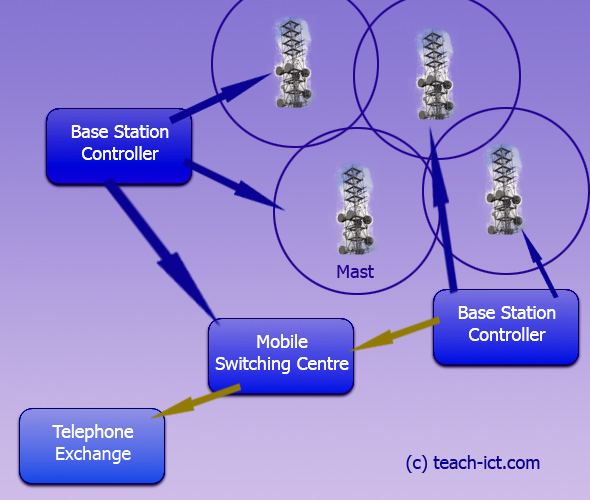3. Making a call
In the UK we say 'call my mobile' whilst in America they say 'call my cell'. But they are the same thing. The mobile phone is only one part of a larger system. The arrangement is shown below

It works like this:
- Your mobile phone makes radio contact with a nearby mobile phone mast owned by your provider. (O2, Vodaphone etc)
- Each mast has a working range called a 'cell' (hence 'cell phone')
- Masts are located so they overlap to some extent to reduce the number of dead spots
- There may be more than one in range. In which case the masts and the mobile phone work out which is the strongest signal then the other masts drop the connection
- A number of masts are controlled by a local base station controller. This begins to route your call once the mast-mobile connection is established in the previous step.
- Each base station is in contact with the mobile switching centre. The centre checks whether you have enough credit to make the call and whether the dialled number is allowed in your contract set up e.g. some block international calls or block premium rate numbers.
- If everything is OK, then the mobile switching centre routes your call to a normal telephone exchange.
- The call is carried along the normal PSTN telephone system and pops out to another mobile switching centre if it is a mobile-mobile call. Or it contacts a normal land line phone.
challenge see if you can find out one extra fact on this topic that we haven't already told you
Click on this link: How mobile phones work
